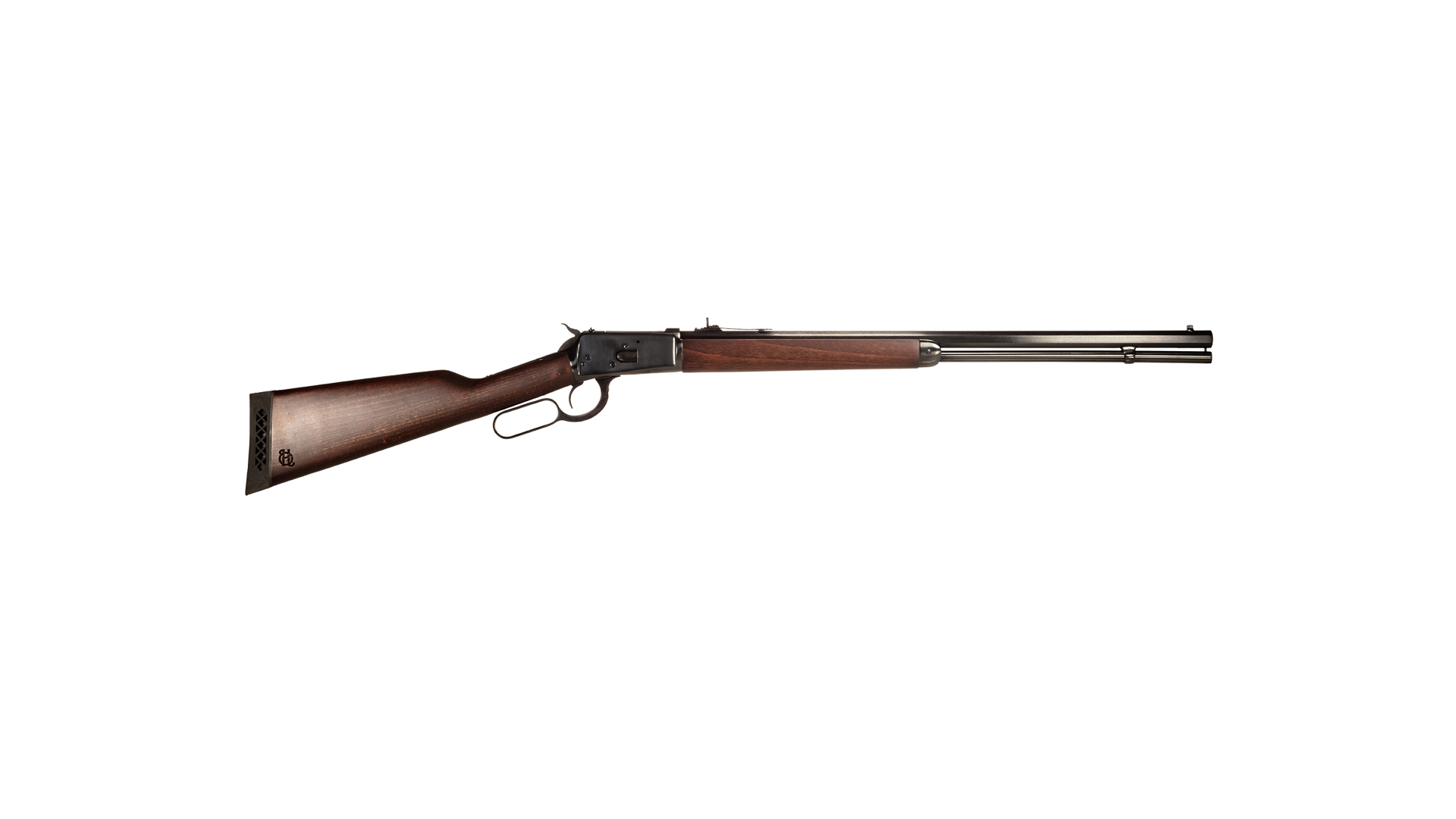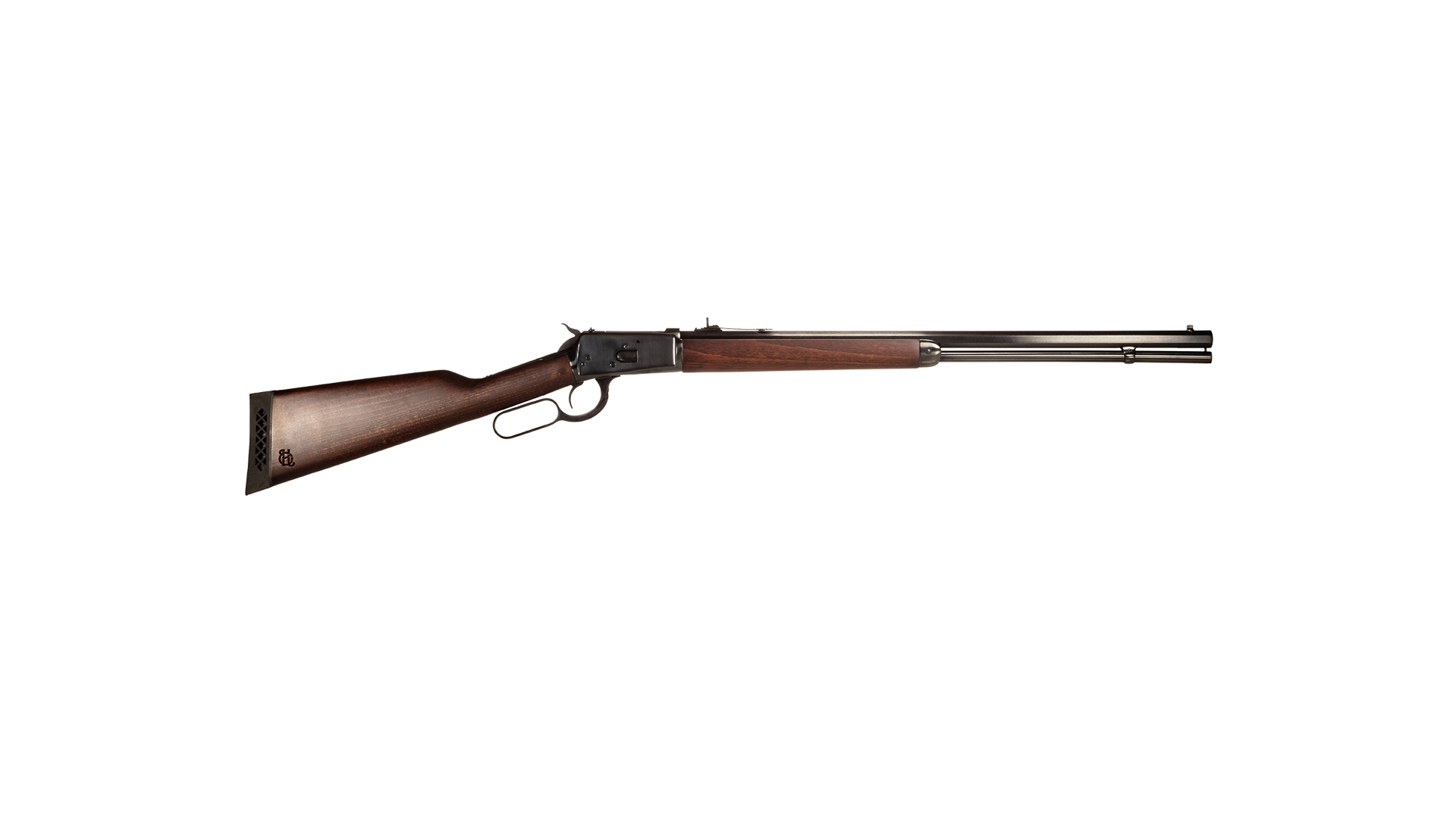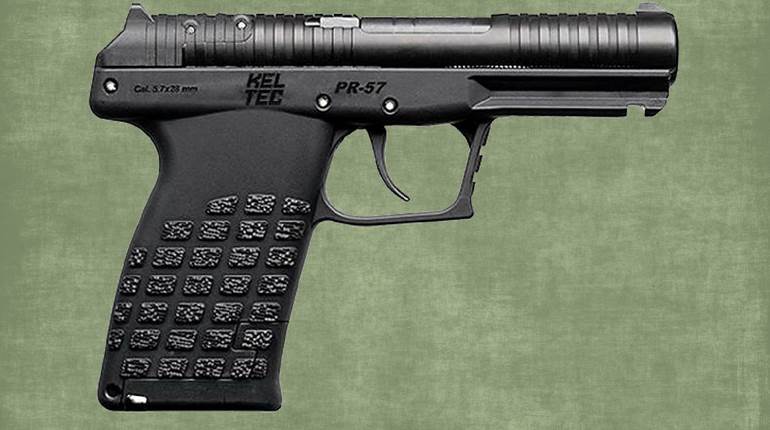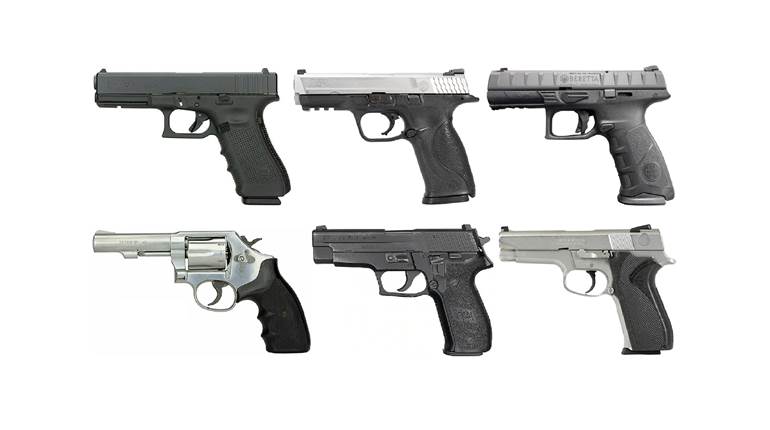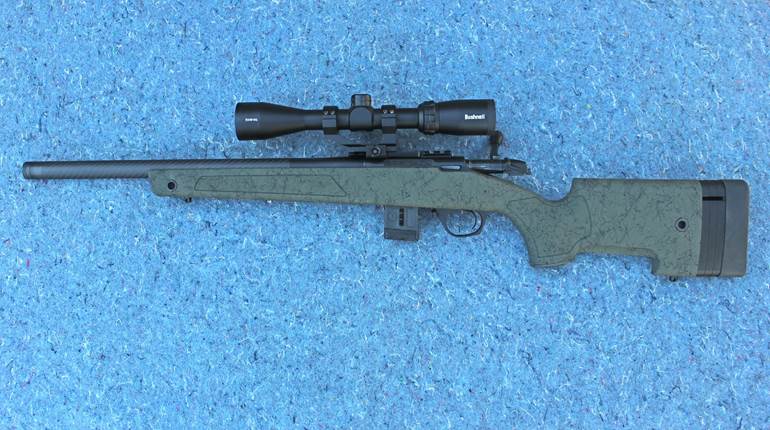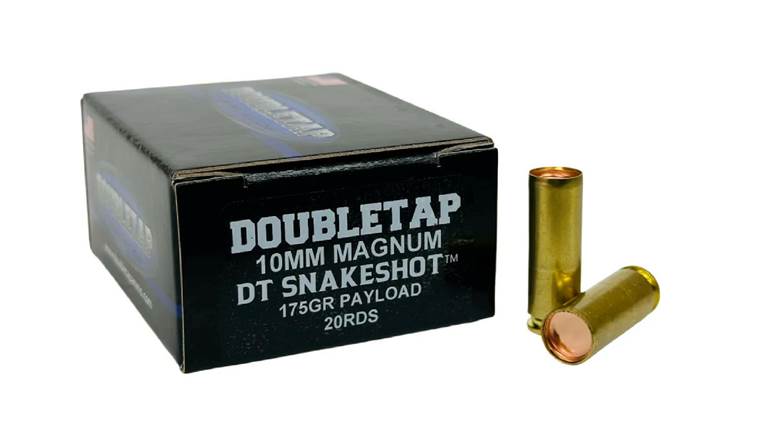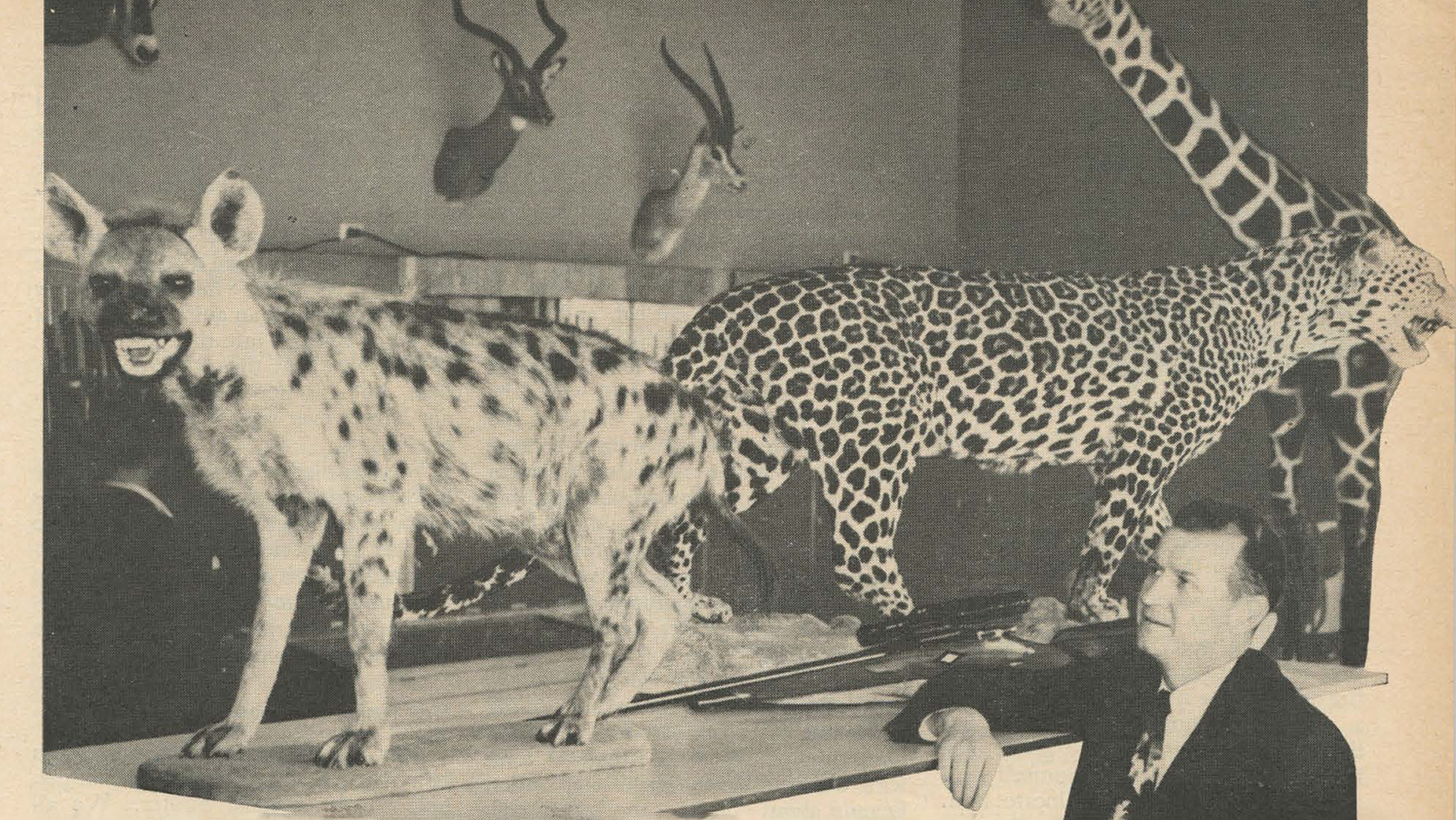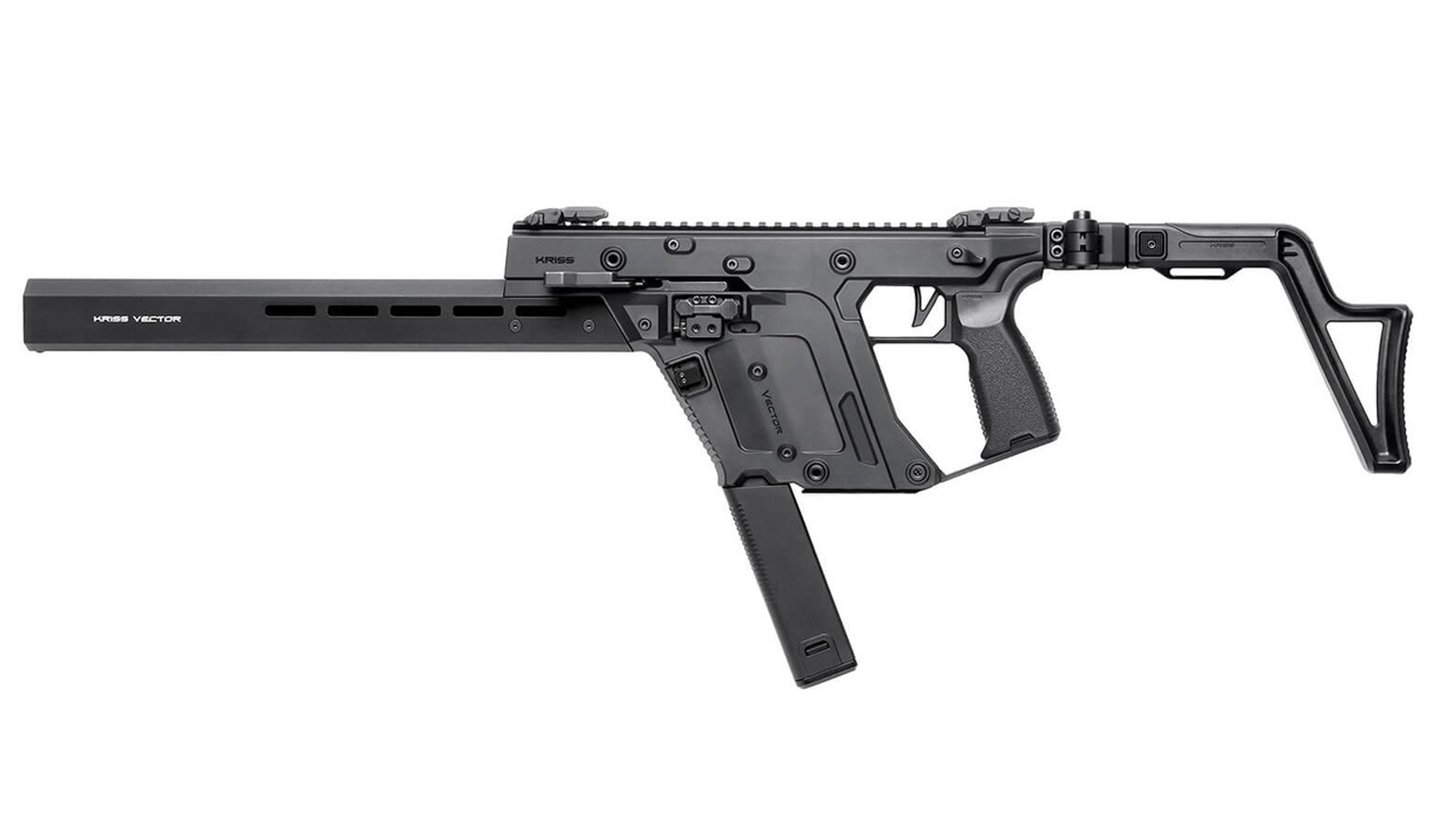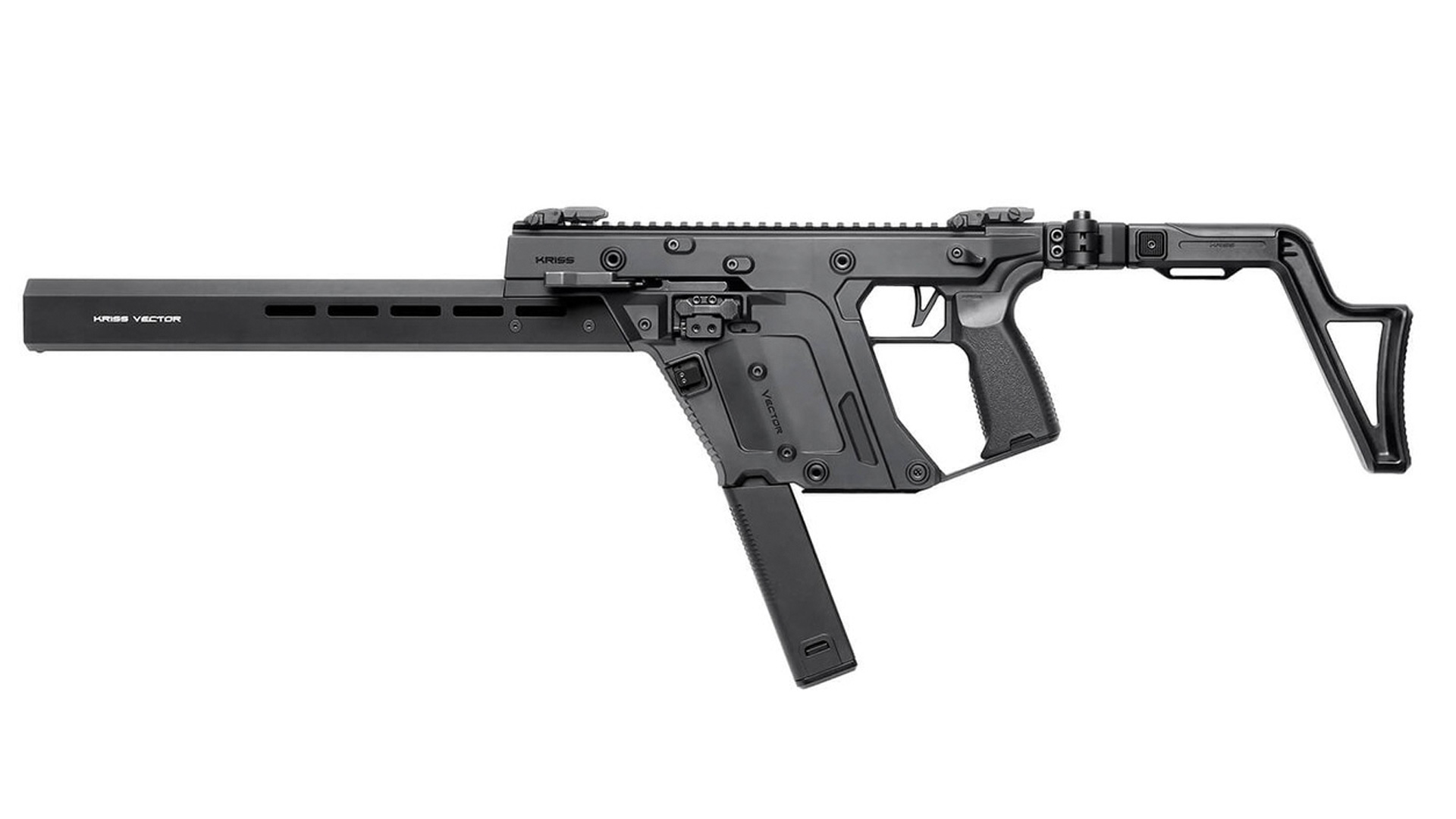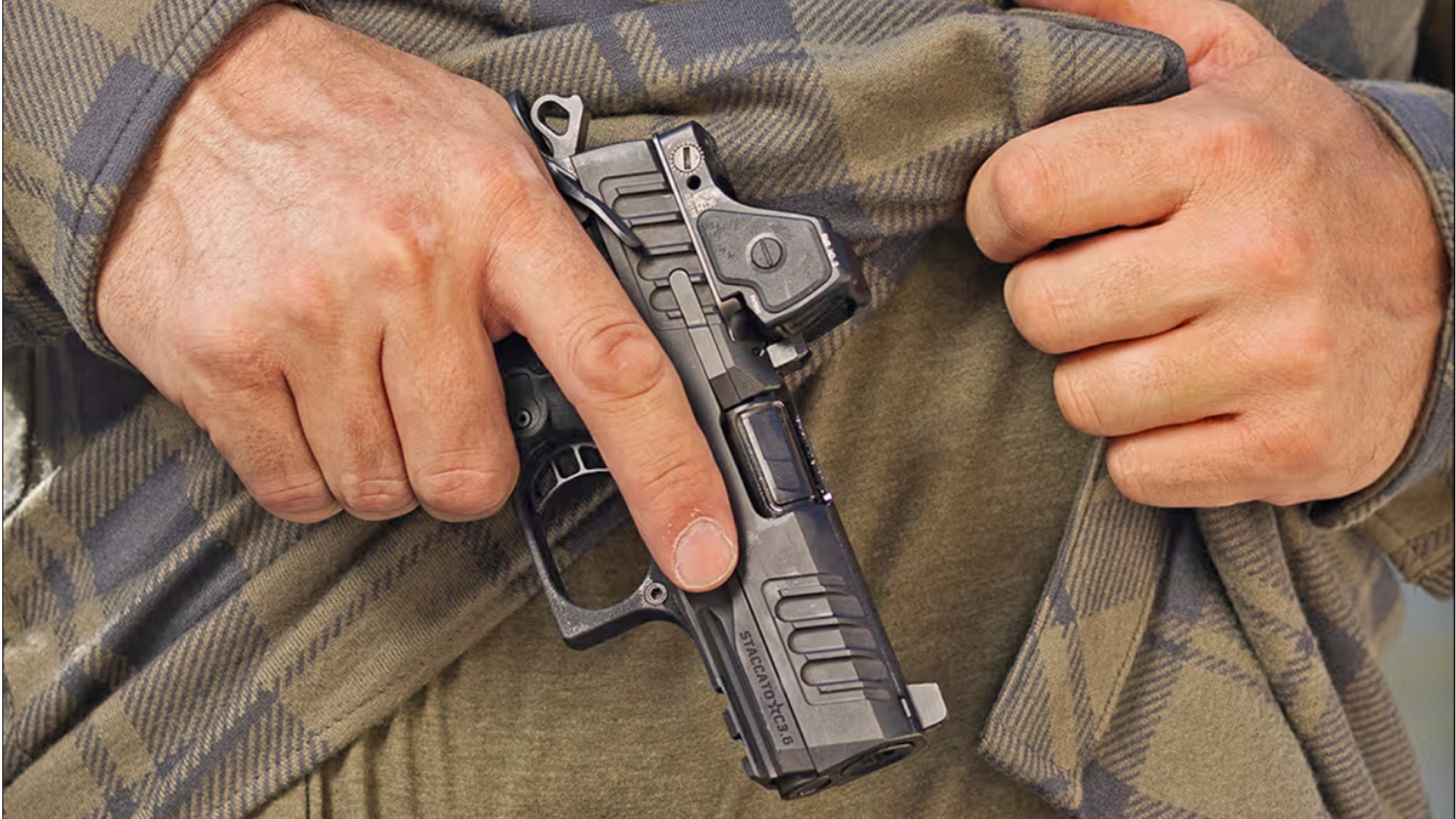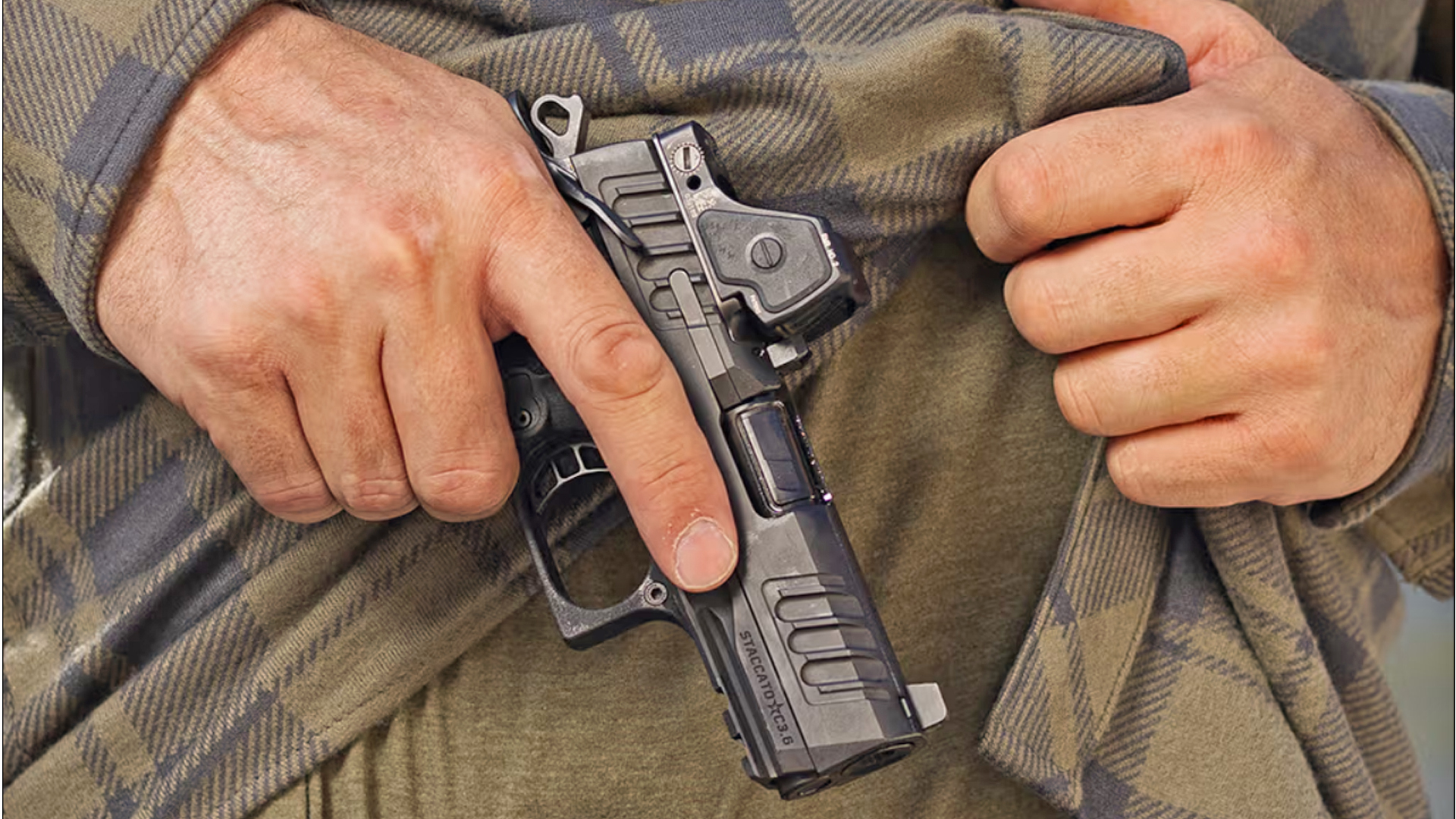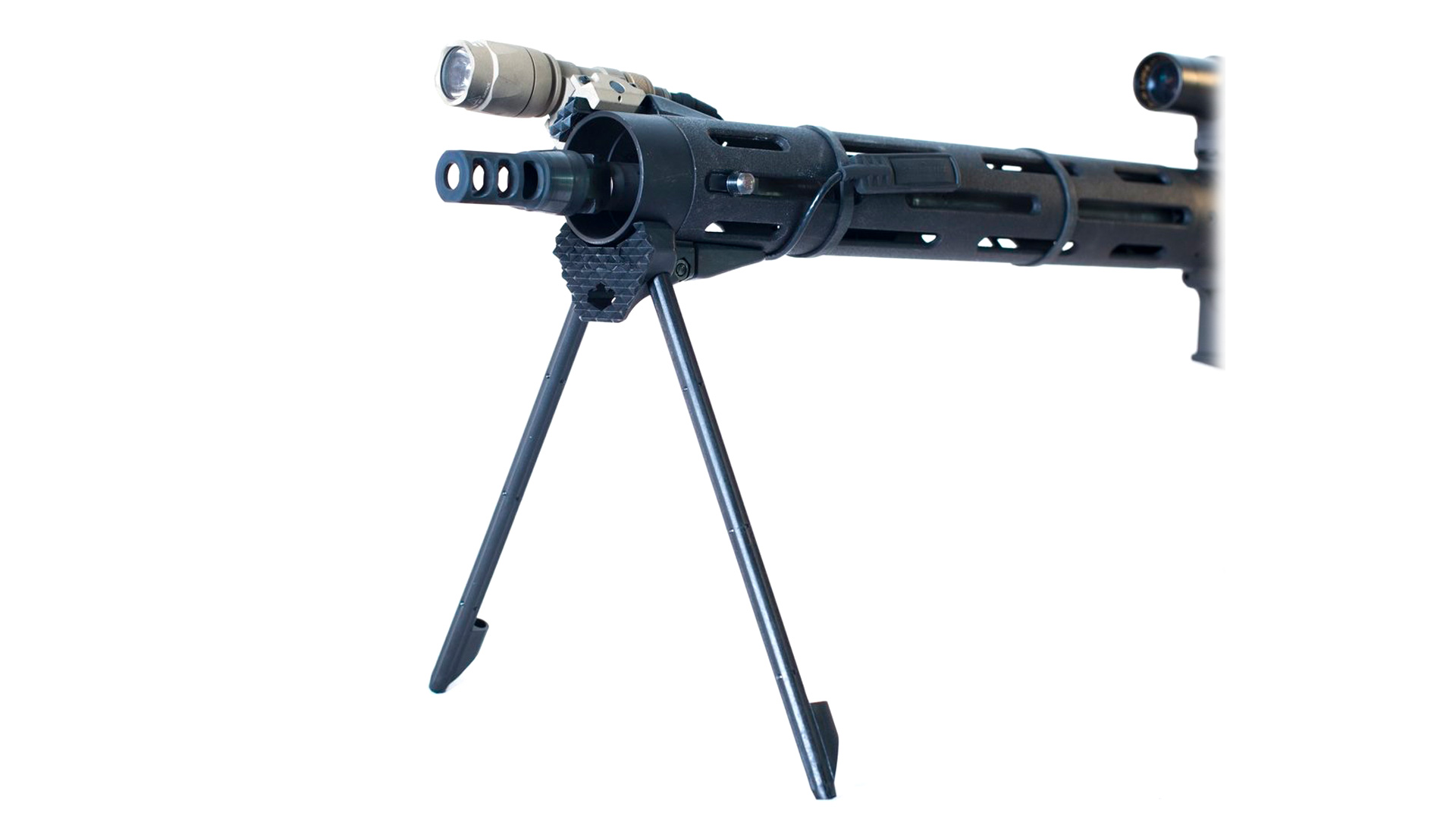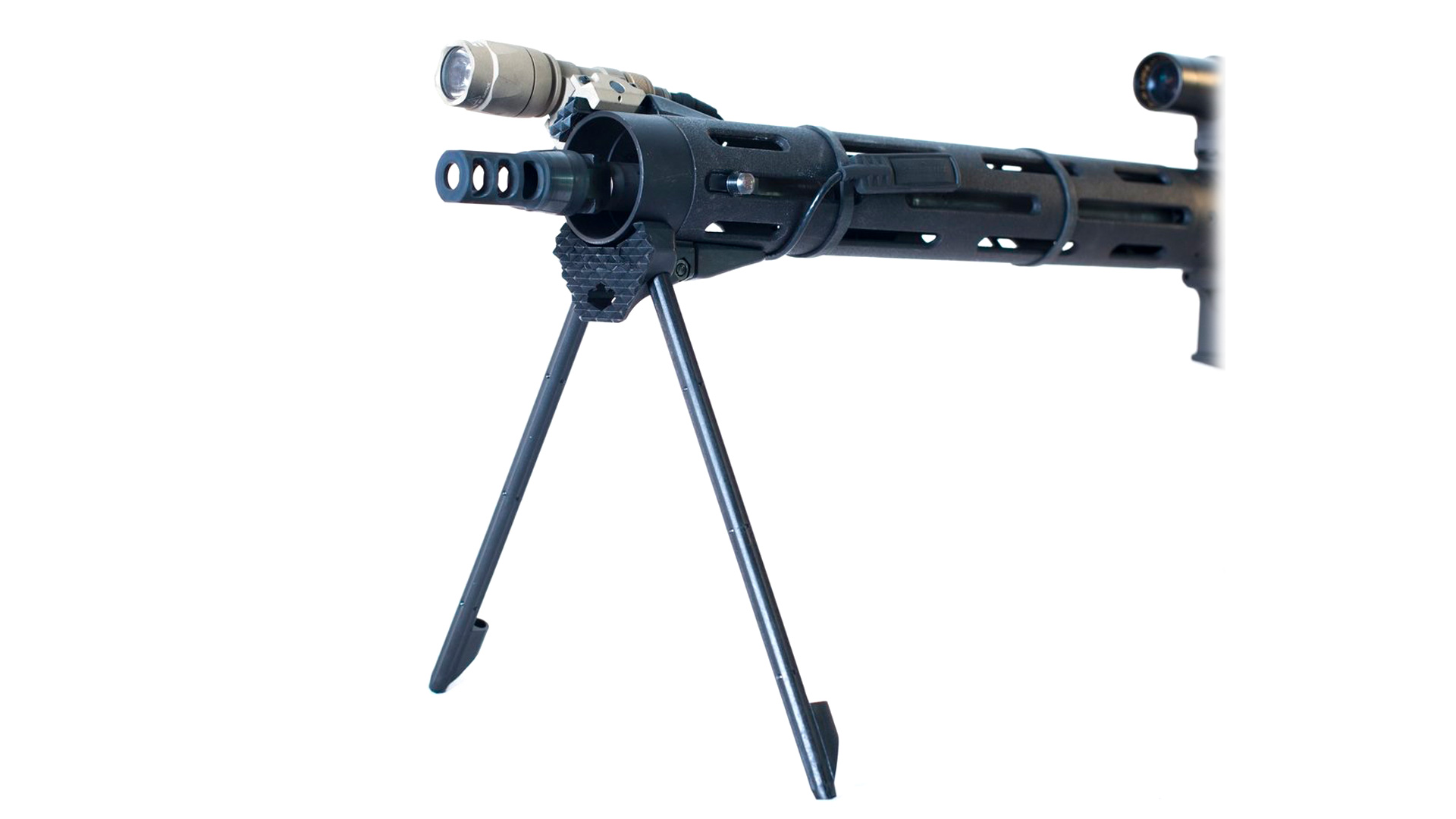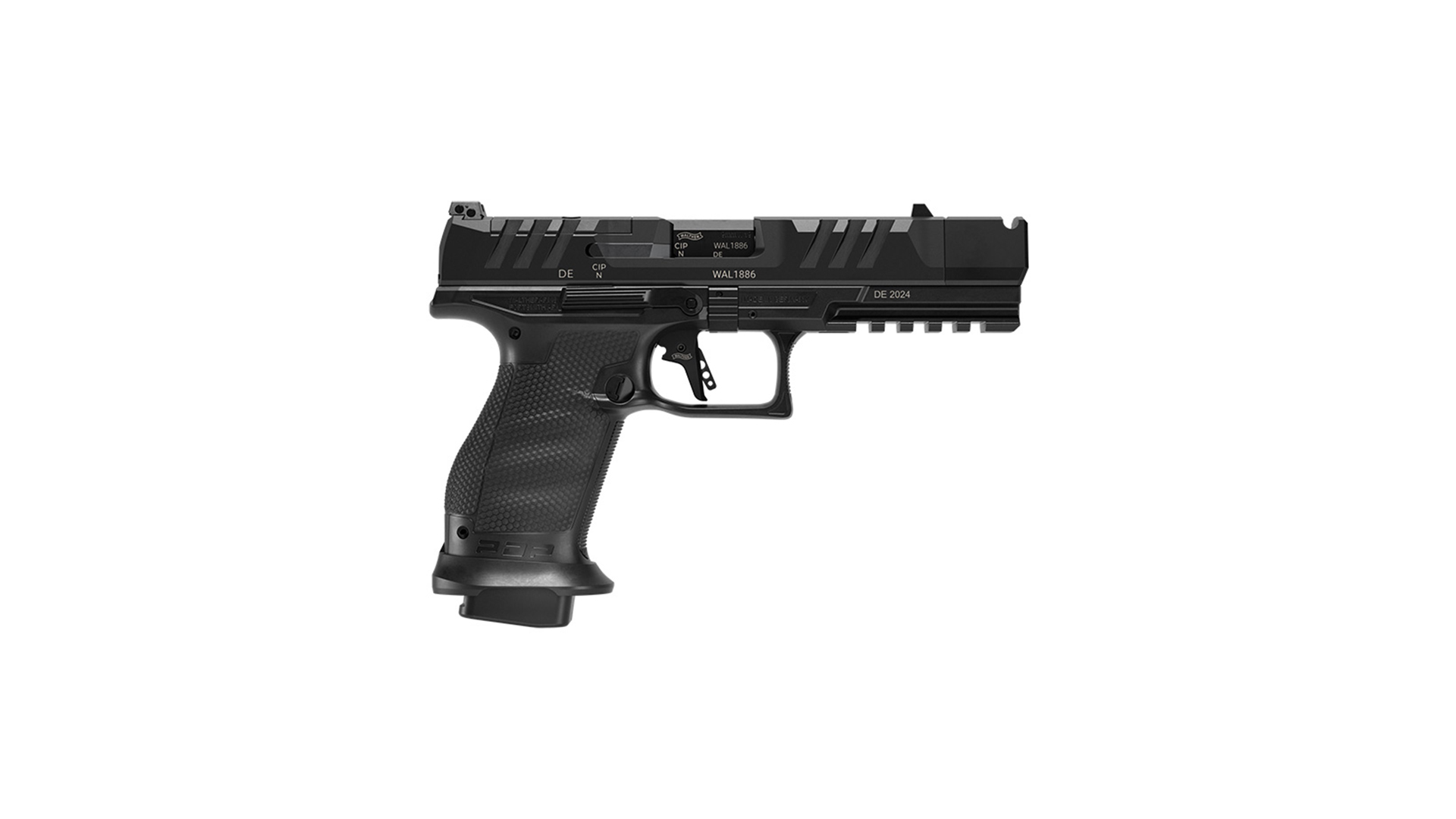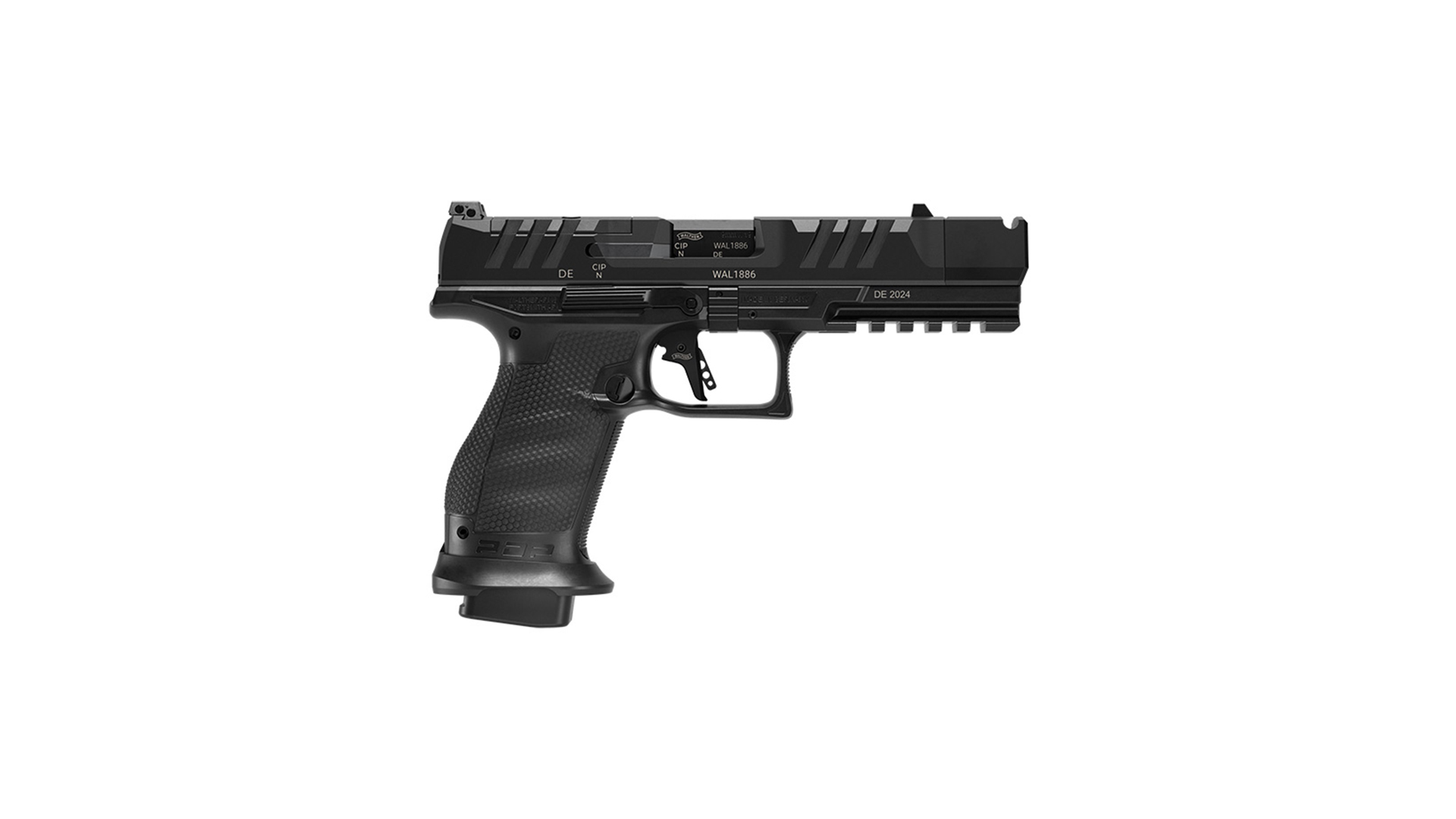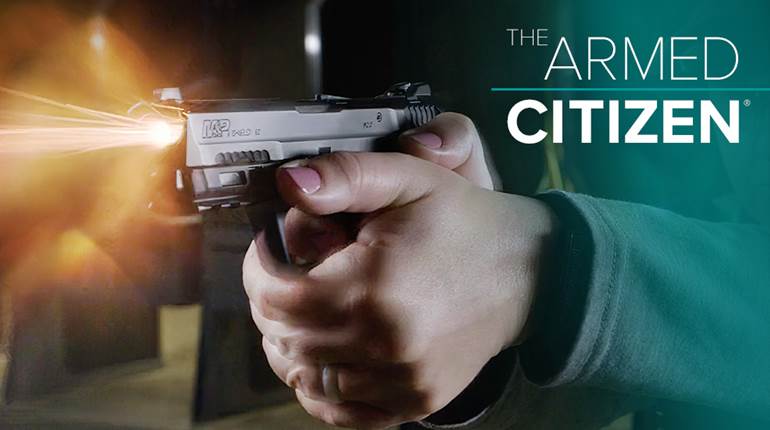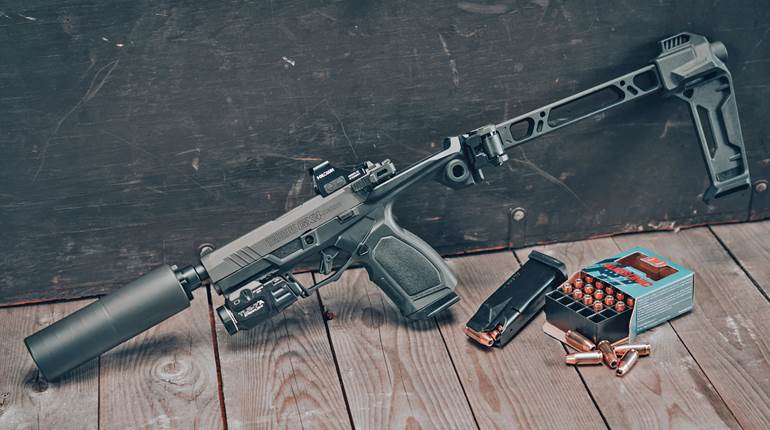
Last year the Mossberg Shockwave 12-ga., a non-NFA 14" barrel pump-action firearm, took the market by storm. Although other companies have offered compact 12-ga. configurations that don't require any additional paper work or tax stamps, the Shockwave provides a balance of features for a fair price that folks couldn't resist. It did so well that it garnered the company two NASGW/POMA Caliber Awards at the 2017 NASGW Expo including the “Innovator of the Year” and “Best New Overall Product.”

With this level of success, it shouldn't come as much of a shock (pun intended) that Mossberg is expanding the Shockwave line up for 2018. Along with new finishes (like Flat Dark Earth) and packages (such as the JIC water resistant storage tube) for the 12-ga. model, the company has developed an all-new 20-ga. version of 590 Shockwave. The company could have taken some shortcuts in building this model by just making a few tweaks to the 12-ga. version. Instead, Mossberg invested the time and resources to properly scale down the components to better fit the smaller 20-ga. cartridge. This makes the new pump-action slimmer and 6 oz. lighter than its predecessor.

The Shockwave is based on Mossberg's 590 tactical shotgun platform used by military and law enforcement personnel as well as home defenders. Although the overall dimensions of this model have been reduced, the company was careful to preserve the 590 features customers prefer including a light weight aluminum receiver that's drilled and tapped for optics, dual action bars, a removable magazine tube cap that allows access to the magazine spring and a non-reflective matte finish for the metallic and polymer components. However, it's a coin toss as to whether or not the after-market accessories designed for the 12-ga. 590 will fit this model. Some will but some won't, so check with the manufacturer before making a purchase.

The muzzle of the 14" cylinder-bore barrel is fitted with a traditional brass bead sight with a barrel support ring that fits around the magazine tube leaving the threaded portion exposed when the magazine cap is removed. This allows for the easy installation of magazine tube extensions on the Standard 590 models.

The ridged polymer pump grip is fitted with a security strap made of nylon webbing. I'm one of the folks who likes the added traction this strap provides when the 590 Shockwave recoils. But if you don't like or want the strap, it can be removed by loosening the four Philips head screws securing it to the grip.

The heavy-walled barrel is chambered for 2¾" and 3" shells loaded with birdshot, buckshot and slugs. When loaded with 2¾" shells the gun can hold five rounds in the magazine plus one in the chamber for a total of 6 rounds. Using 3" shells reduces the capacity to 4+1 rounds.

The traditional rounded polymer trigger guard protects a deeply curved, smooth-faced steel bow trigger. The single-stage trigger of the gun tested exhibited a fairly smooth 6 lbs. 6 oz. trigger pull with a distinctive “click” that accompanied the short trigger reset. The slide release is located behind the trigger guard on the left side of the receiver.

One of the features I like best about the Mossberg is the intuitively situated sliding tang-mounted safety. Because the polymer slider is located on top of the receiver it's easy to operate left or right handed. Pressing it forward (toward the muzzle, exposing the red dot) places the slider in the Fire position. Sliding it back (toward the grip) moves it into the Safe position.

This scattergun is named after the Shockwave Industries furniture it's fitted with, including the unusual Raptor bird's head grip and the pump grip. Although the straight neck of the grip seems like it might intensify felt recoil, it actually works to make the gun more manageable when fired from hip or chest level.
I have mixed feelings about the sling swivel stud mounted to the grip. At first I liked the idea of having a grip mounted stud paired with the one in the magazine cap so that a two-point sling could be quickly and easily attached. However, an error in judgment, or simple fatigue, can result in the bird’s head grip slipping a bit (which is why this gun should not be fired at eye level). Honestly, should that particular “educational opportunity” present itself, I would much rather have the wide, rounded butt of the polymer grip distributing the impact against my ribs or hip rather than having a 0.36" diameter steel stud reach them first. The good news is that the swivel stud is threaded into the grip. Customers have the option of leaving it in place to support a sling or simply twisting it out of the grip if it's not going to be used.
The 20-ga. shot shell has the potential of launching 80 percent of a 12-ga. shell's payload with only 50 percent of the felt recoil, making it much more accessible to a greater range of body types and skill levels. That being said, shotshells are an exceptionally flexible type of ammunition that can be loaded to serve a wide variety of applications. This means that while the rule of thumb that says 20-ga. platforms kick less than 12-ga. models is generally true, there are commercially loaded 20-ga. shells that push the upper power and payload limits. The result is levels of felt recoil that fall well into the 12-ga. range. As always, the gun should be tested with several loads to verify which one is the best for your needs.
Although the variety of 20-ga. buckshot loads suitable for personal protection is not nearly as diverse as the 12-ga. options on the market, the rounds that are available will certainly get the job done should the need arise. Remington Express and Winchester Super X 2¾” rounds are filled with 20 pellets of #3 buckshot (.25" diameter, ~23.4-gr. per lead pellet) with velocities of up to 1200 fps. Federal Premium Ammunition offers 2¾”shells filled with 20 pellets of #3 buckshot or 24 pellets of #4 buckshot (.24", ~20.6-gr.) with velocities ranging from 1100 to 1200-fps. Federal's 3" shells are packed with 18 pellets of #2 buckshot (.27", ~29.4-gr.) traveling at 1100-fps.

After the 590 20 ga. proved to be utterly reliable with a variety of birdshot, buckshot and slug loads, formal pattern testing was conducted at 7 yards from a standing position using three Federal loads. The pump gun was aimed using the same “peck press” hold that I worked out with the 12-ga. model.

The heaviest load I had on hand was the Federal Premium Upland Load 3" Magnum filled with 1¼ oz. of #4 copper-plated birdshot traveling at 1300 fps. The felt recoil was on par with a 12-ga. shell and it produced a 9" pattern from the cylinder bore 14" barrel.

The Federal Premium Personal Defense 2¾” shell is packed with 24 pellets of copper-plated lead #4 buckshot launching at a softer shooting 1100 fps. This load was easy to handle with moderate recoil (on par with the Aguila Mini 12-ga. shell) and a pattern that opened up to 10".

The least expensive and most commonly stocked variety of 20-ga. buckshot is the 2¾” shell pushing 20-pellets of plain lead #3 buckshot at 1200 fps., including Federal's Vital-Shok load. It produced more felt recoil than the Personal Defense round, but not much. The pattern was the tightest of the test set at 6".

Mossberg is a smart company that works carefully to meet its customers’ needs and requests while keeping their product prices within reach of the average shooting enthusiast. This new version of the 590 Shockwave is a welcome addition to the lineup for those who already enjoy shooting 20-ga. shells and those who are looking for lower levels of felt recoil. 
The development of the 20-ga. Shockwave is a more noteworthy event than some folks may realize. This is the first time the company has offered a tactical 590 in this caliber. As nifty as the Shockwave is, what I'm looking forward to is finally seeing the arrival of a standard stock and barrel configuration of this 590 for folks who take personal and home defense seriously but prefer to use the 20-ga. shell. 
For more information regarding the legalities of owning a 14" barrel pump gun and a discussion of shooting techniques, see Tested: Mossberg 590 Shockwave.
Specifications:
Manufacturer: O.F. Mossberg & Sons
Model: 590 Shockwave (#50659)
Action: Pump Action
Caliber: 20 gauge, 2¾” and 3” Shells
Barrel: Matte Blue Steel, Heavy-Walled
Receiver: Hard Anodized Aluminum
Trigger Guard: Black Polymer
Fore-end: Shockwave Technologies Raptor Strap Kit, Ribbed Black Polymer
Grip: Shockwave Technologies Raptor Bird’s Head, Smooth Black Polymer
Sight: Brass Bead
Barrel Length: 14" Smooth Bore
Choke: Cylinder Bore
Overall Length: 26.32"
Trigger Pull: 6 lbs. 6 oz. (as tested)
Weight: 5 lbs. Unloaded
Capacity: 3" Shells = 4+1, 2 3/4" Shells = 5+1
Accessories: Lock, Owner's Manual
MSRP: $455
Additional Reading:
Mossberg M590 Shockwave Review
NRA Gun of the Week: Mossberg 590 Shockwave
Dressing Up the Mossberg 590 Shockwave
Tested: Mossberg 590 Shockwave








